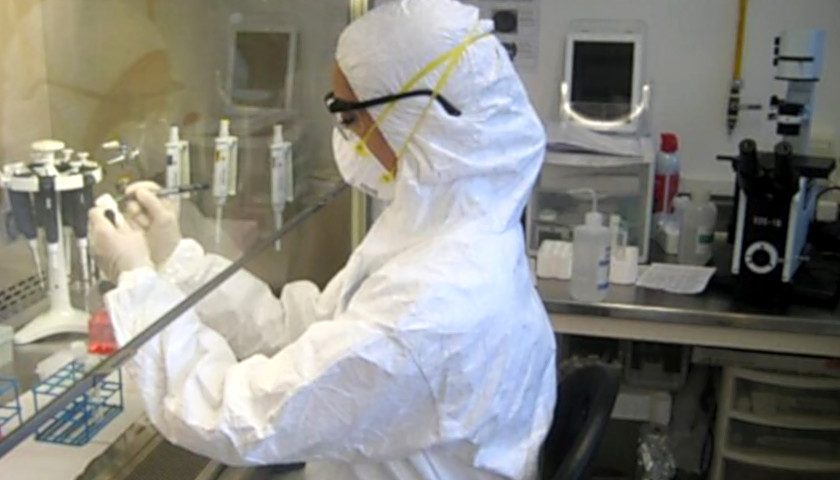by Mason Good
The National Academies of Sciences, Engineering, and Medicine recently held an event titled: “Structural Racism and Rigorous Models of Social Inequity.” The two-day conference seemed less of a workshop, as was advertised, and more of a struggle session against enemies of “equity.” The main takeaway from this event was that we must implement critical race theory (CRT) into every facet of science. This conclusion was not drawn from inference. Throughout the conference, multiple speakers advocated explicitly for the use of critical race theory. By doing so, however, one must ask: Have the National Academies abandoned the sciences altogether?
To answer that question, one must first answer another: Is critical race theory scientific and beneficial to the scientific community? CRT contends that race is a social construct, tracing that argument back to W.E.B. DuBois, and there are good reasons to accept this claim. After all, while it is observably true that people vary by the color of their skin and other immutable characteristics, it makes little sense to divide people into “races.” Biologists, for example, talk not of “races” but of populations, and those medical researchers find genetics a far more useful analytical tool than any abstract concept of “race.”
So far, it would appear that CRT is scientific and beneficial to the scientific community. However, one has yet to consider the applied postmodernism of the theory, and its concern with language. Critical race theorists focus on issues such as hate speech, microaggressions, and cultural appropriation. In fact, they believe that speech which may lead to “racial inequity” must be censored. Such an approach is antithetical to scientific progress, as free speech and open debate are necessary to challenge ideas. Censorship will only hinder that speech and debate, slowing scientific progress, if not stalling it completely.
Moreover, CRT is not scientifically skeptical, but radically skeptical. Through this approach, it questions how knowledge—viewed as a mere cultural construct—was “created” through systems of power. The theory looks for the bigotry, biases, and power imbalances it assumes are present, ignores all evidence to the contrary, and concludes quite unscientifically that all disparate outcomes have a single explanation: racism. Therefore, CRT is not an inquiry, as the theory arrogantly assumes that it has the answers and threatens to impose its hubris on genuine inquiries, such as scientific investigations.
The presenters at the National Academies did not shy away from this unscrupulous and unscientific behavior. Rather, they embraced it. As Rachel Hardeman from the University of Minnesota concisely explained, “In order to do this work we have to start with an Anti-Racist framework, which centers us on the fact that certainly racism is a fundamental cause of health inequities . . . It also asks us to consider, or reconsider, whose evidence we deem to be real.” Yes, anti-racism—a deceptive euphemism for CRT—does not hold evidence as objective facts one weighs, but as subjective bits of knowledge one possesses. In short, “speak your truth.”
While it is clear that critical race theory will hinder scientific progress, and that it derails scientific inquiry at its start, the theory also has severe implications for the scientific community. In assuming power imbalances exist everywhere, CRT does two things simultaneously. First, the theory antagonizes white people, accosting them for their supposed “power” and “privilege.” Second, the theory dehumanizes people of color, teaching them to blame all of their woes on “systems,” and to assume that bigotry, bias, and racism are inescapable. CRT hurts the mental and emotional health of everyone.
The National Academies have contributed to this damage. Their conference opened and continued with speech after speech on the catastrophe of “black lives.” One speaker, Evelynn Hammonds from Harvard University, even presented a slide which stated that “[Michael] Brown was not shot because he was black. He is black because he was shot.” Later, when Hammonds was asked if this same logic applies to higher abortion rates among black women, her answer was yes. Under critical race theory, to be black is to identify with tragedy. Group membership depends on it, incentivizing black people to see such tragedy everywhere, be it real or imagined.
Whites were not treated any better by the presenters. Eduardo Bonilla-Silva from Duke University argued that the “White Habitus” molds white people into perpetuating “whiteness.” As Bonilla-Silva explained: “Whites’ hypersegregation in life leads to the reinforcement of whiteness as norms, culture, aesthetics, emotions, and cognitions.” Margaret Hicken, from the University of Michigan, argued that resistance to “equity”—which requires a person to surrender the entirety of his individual agency to bureaucratic oversight—is nothing more than an attempt to “restore the equilibrium ultimately set up by cultural racism, toward white privilege.”
Clearly, the National Academies have abandoned the sciences. By adopting critical race theory, they have invited censorship which will slow, and even stall, scientific progress and debate. They have made a hubristic assumption that all disparate outcomes are attributable to racism, stopping scientific inquiry before it can start. They have chosen to deny evidence if it does not conform to their ideological pieties. And, through the imposition of this divisive ideology, they foster racial division rather than alleviate it, which mars the scientific community’s collegiality. History and science will not look fondly upon this erroneous epoch.
– – –
Mason Goad is a junior researcher with the National Association of Scholars, investigating DEI in STEM education and research. He can be contacted on Twitter (@GoadMason) or via email at goad@nas.org.




